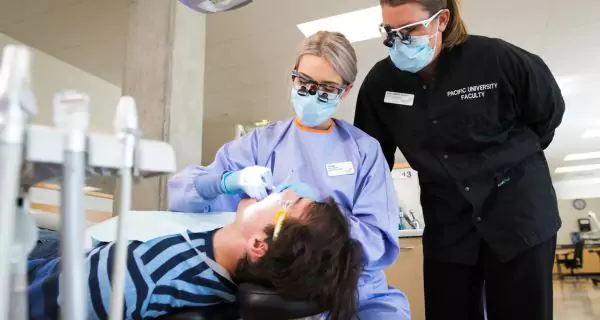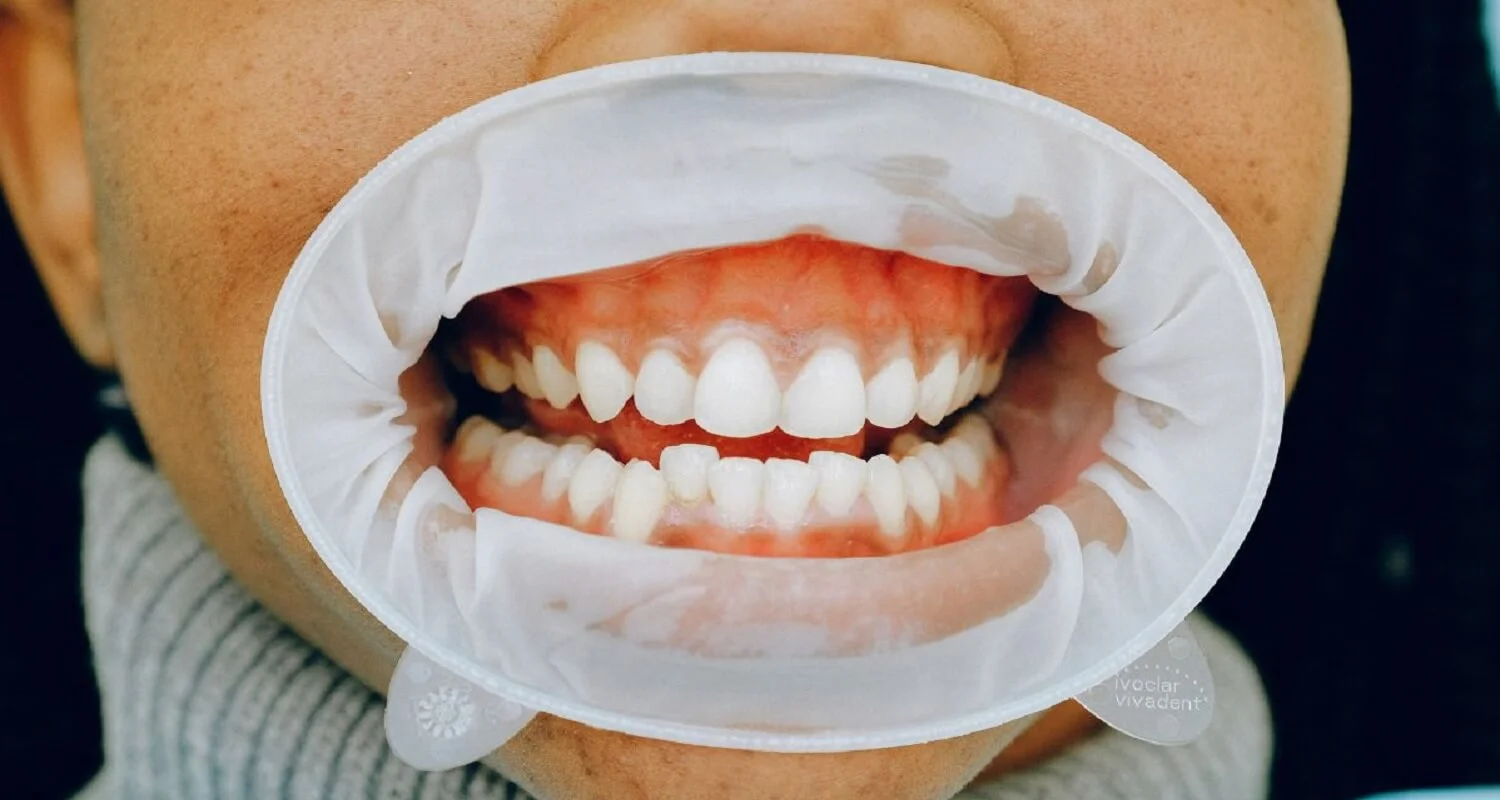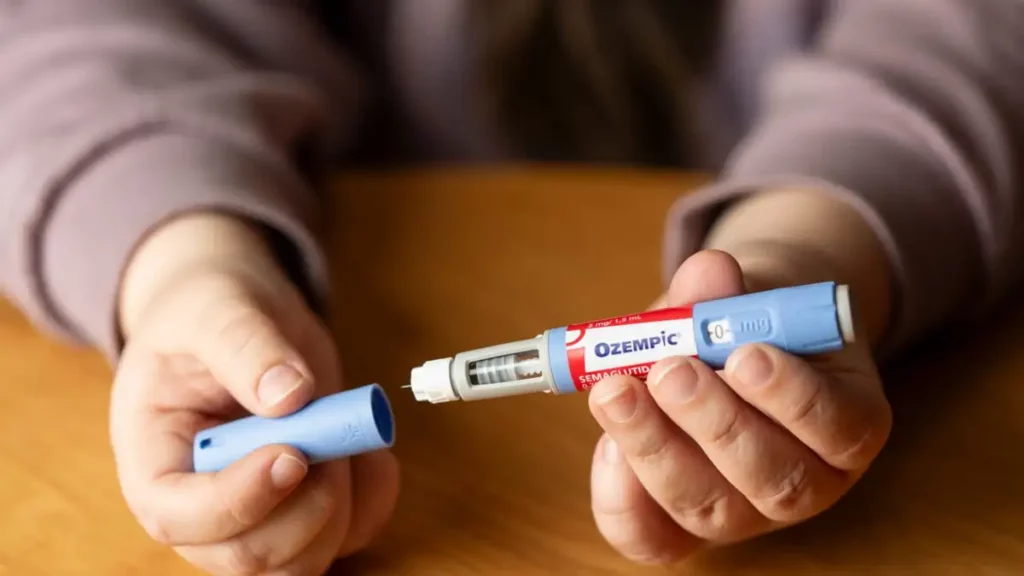Last Updated on: 19th September 2025, 12:49 pm
Trench mouth is the popular name given to an acute gum infection. It is an advanced form of gingivitis that can have relevant effects on the gums and teeth, which is why trench mouth treatment is necessary.
If trench mouth is left untreated, the infection can kill gum tissue and spread to the cheeks, lips, or jaw and destroy tissues.
In clinical settings, it is referred to as acute necrotizing ulcerative gingivitis (ANUG), Vincent’s disease, Vincent’s stomatitis, or necrotizing ulcerative periodontitis.
The origin of the popular name “trench mouth” comes from the troops in World War I. In that environment, due to the living conditions of soldiers, poor dental hygiene, and lack of oral health care, they developed various gum diseases.
Generally, this dental condition is more common in areas where access to dental care is not facilitated and in people aged between 15 and 35.
What are the Causes and Symptoms of Trench Mouth?
There are different bacteria, fungi, and viruses in the mouth that maintain a balance. When that condition is disrupted, bacteria that affect oral health grow, and ANUG (trench mouth) appears.
Generally, this disease is a consequence of poor oral hygiene. It can also come from pre-existing gingivitis, stressful situations, excessive consumption of alcohol and tobacco, and gum injuries, among others.
People with a compromised immune system are more susceptible to this condition. This is the case for those diagnosed with diabetes, cancer, or HIV.
Some of the symptoms that warn of this disease are bad breath, bleeding gums during brushing, inflammation of the glands in the neck, metallic taste in the mouth, and gum pain.
How is Trench Mouth Diagnosed?
A review of the person’s general health and oral health history is conducted. This allows identifying if there is any health condition that compromises or affects the immune system. An inspection of the mouth is also performed to detect any symptoms related to ANUG. This is complemented by blood tests and X-rays to assess if the bone has been affected.
Trench Mouth Treatment
The trench mouth treatment involves different strategies and requires the active participation of the patient with the guidance of the dentist.
The first step is to control discomfort and pain. In this initial phase, over-the-counter pain relievers are used. These medications can also be prescribed by the dentist.
To help remove affected or dead tissues, mouth rinses with a solution of salt water or a mixture of hydrogen peroxide and water are recommended. These rinses also relieve gum pain.
The therapeutic route progresses through different stages, depending on the clinical picture presented by the person’s oral health condition:
Stage 1. If there is a fever or swollen glands
The fever indicates the presence of infection, and it will be necessary to receive treatment with antibiotics to attack the bacteria. Laboratory analysis is required to identify which type of antibiotic is sensitive to the infection and then perform the dental procedure. The most commonly used and prescribed antibiotics for oral administration are in the following order:
• Penicillin
• Metronidazole
• Amoxicillin
• Erythromycin
• Tetracycline
The dose, frequency, and treatment days vary depending on the diagnosis and will be defined by the dentist or specialist. If the infection has spread to other parts of the body, it may require systemic or intravenous antibiotic management (i.e., through the vein). The use of over-the-counter pain relievers is also convenient and must be prescribed in case of requiring greater potency.
Stage 2. In the case of pre-existing gingivitis
The treatment begins with a deep cleaning of teeth and gums: root planing and scaling, for which local anesthesia will be applied. Adequate nutrition and good oral hygiene habits are recommended.
Stage 3. Surgical intervention
It will be necessary if a remaining gingival structure is found that hinders oral hygiene. This surgery will allow the filling of the spaces between the teeth. This intervention will proceed once there are no gingival problems, and there is control of plaque or tartar. It is crucial to be careful to avoid removing healthy tissue, and the entire procedure lasts around a month.
The success of this intervention will be given in the long term by good oral hygiene and periodic check-ups with a dentist.
Care After Treatment
In the days following treatment, it is recommended not to brush the teeth due to post-intervention sensitivity and to rinse with a saltwater solution.
To facilitate favorable evolution (prognosis), the dentist will give indications regarding fluid consumption (maintaining good hydration), avoiding very hot or spicy foods while the gums heal, as well as reducing the consumption of alcohol/tobacco and carbonated drinks, among other care measures.
Daily brushing and flossing are necessary, and it is also suggested to engage in stress-reducing activities, consume a balanced diet, and make periodic control visits with the dentist, who – depending on the evolution of the treatment – will recommend other options or medications.
Generally, the infection responds to treatment, and relief becomes evident in a few days, overcoming the disease in a few weeks.
Prevention of Trench Mouth
Various prevention measures are at hand, including:
• Consuming a balanced diet.
• Getting enough sleep.
• Avoid stressful situations.
• Avoid the consumption of alcohol and tobacco.
• Maintaining good dental hygiene, including brushing, flossing, and mouthwash.
Another preventive practice is regular visits to the dentist, which will allow for the timely detection of any symptoms and the initiation of appropriate treatment.
Share:
References
1. Cleveland Clinic (Julio 21 de 2022) Trench Mouth / https://my.clevelandclinic.org/health/diseases/17776-trench-mouth
2. Coelho Steph (Febrero 22 de 2022) Trench Mouth: What You Should Know / https://www.verywellhealth.com/trench-mouth-5218403
3. J R Coll Gen Pract (Julio de 1968) Trench mouth in children / https://www.ncbi.nlm.nih.gov/pmc/articles/PMC2236538/
4. Hersh Erica (Noviembre 1 de 2019) Trench Mouth / https://www.healthline.com/health/trench-mouth
5. MedlinePlus (Enero 24 de 2022) Boca de trinchera / https://medlineplus.gov/spanish/ency/article/001044.htm
6. Ubertalli James T. (Mayo de 2022) Gingivitis ulcerosa necrosante aguda (GUNA) / https://www.msdmanuals.com/es-co/professional/trastornos-odontol%C3%B3gicos/enfermedades-periodontales/gingivitis-ulcerosa-necrosante-aguda-guna
-
Nayibe Cubillos M. [Author]
Pharmaceutical Chemestry |Pharmaceutical Process Management | Pharmaceutical Care | Pharmaceutical Services Audit | Pharmaceutical Services Process Consulting | Content Project Manager | SEO Knowledge | Content Writer | Leadership | Scrum Master
View all posts
A healthcare writer with a solid background in pharmaceutical chemistry and a thorough understanding of Colombian regulatory processes and comprehensive sector management, she has significant experience coordinating and leading multidisciplina...




















